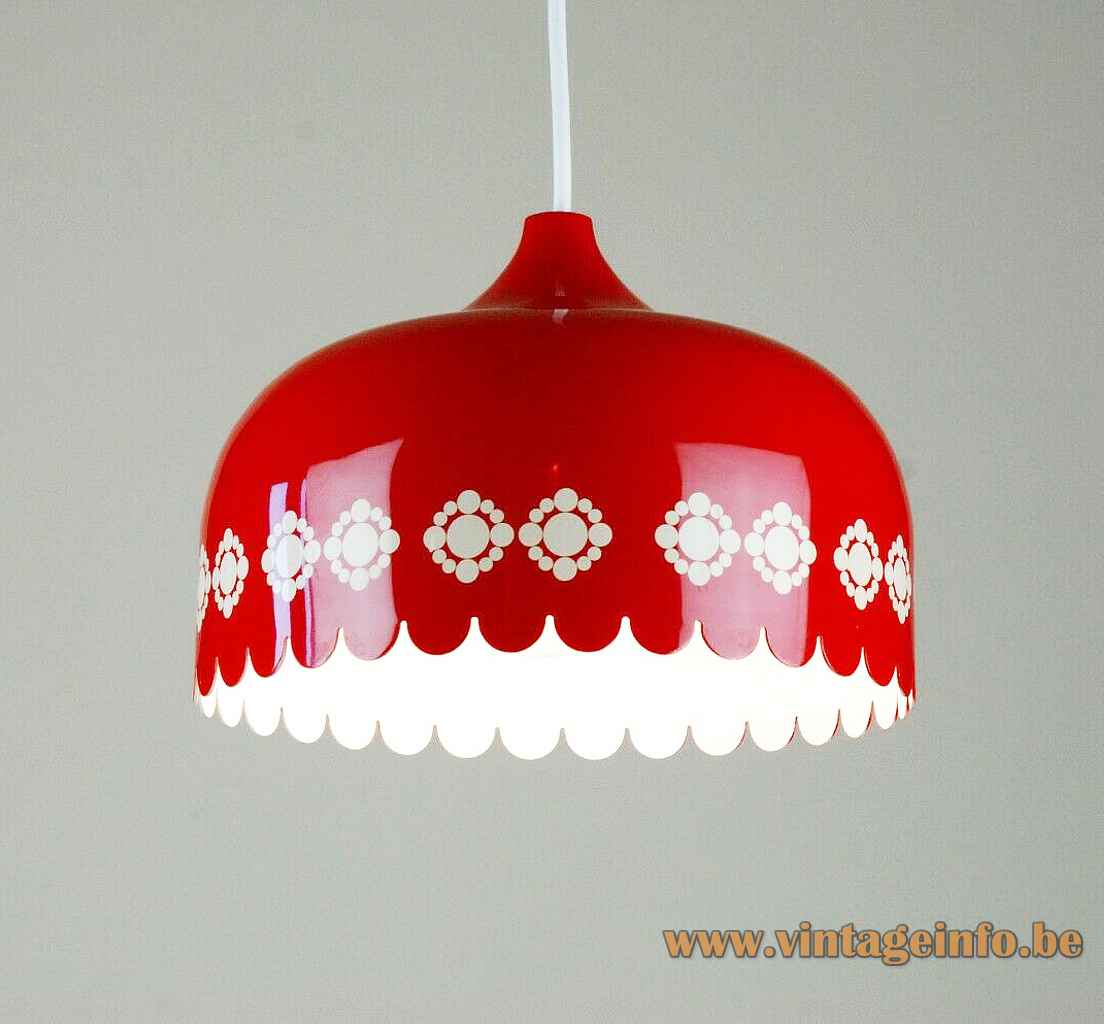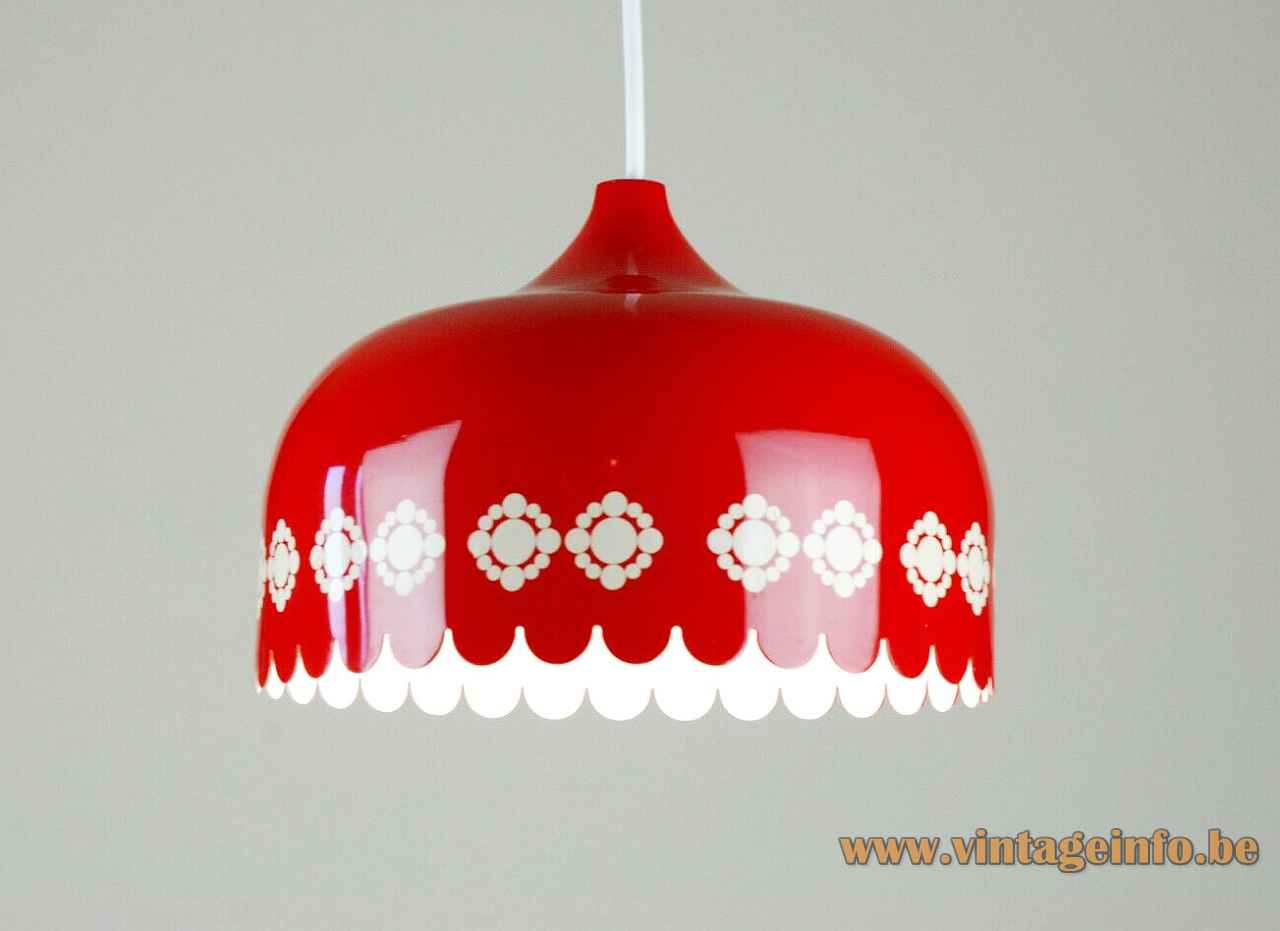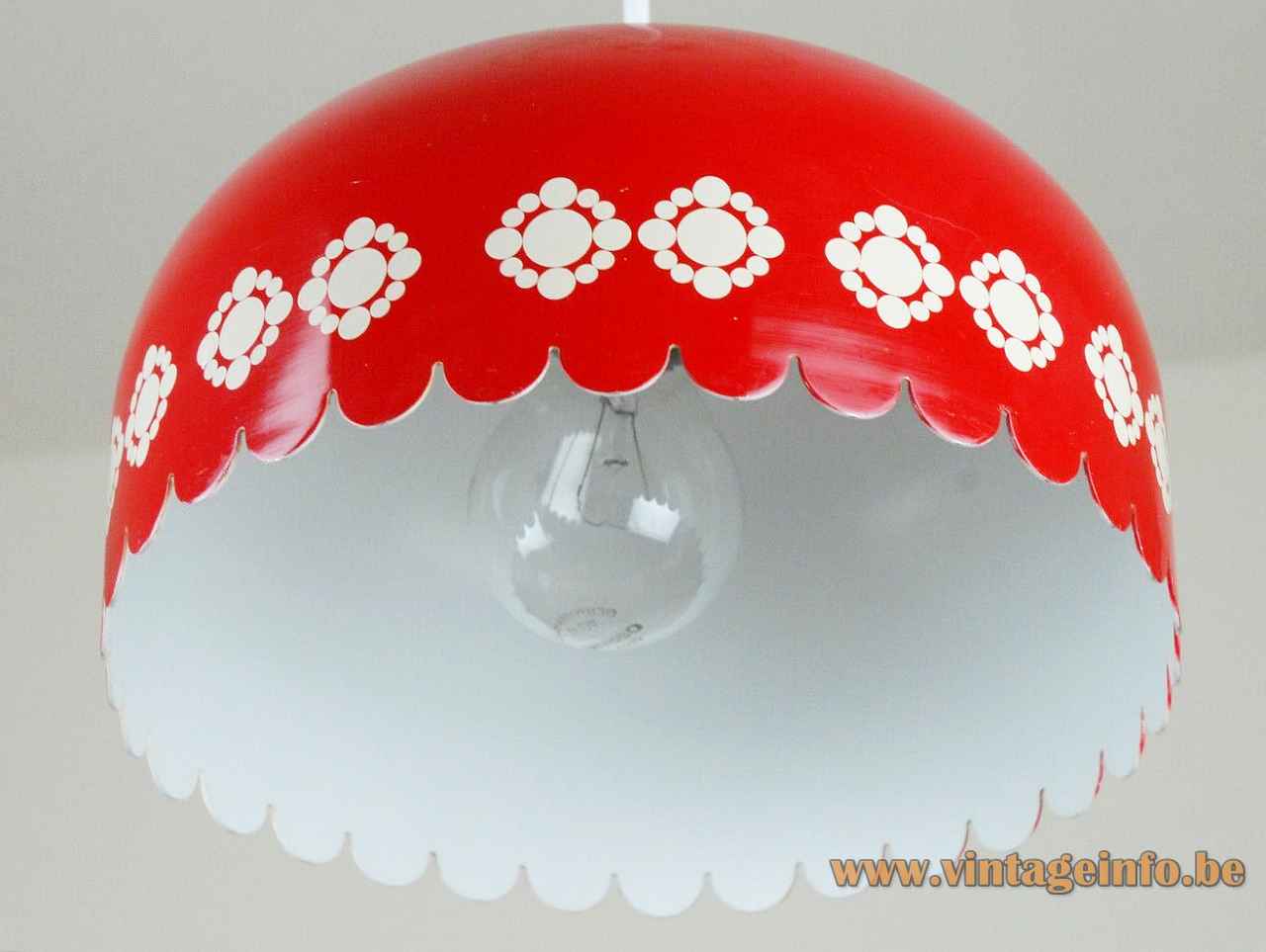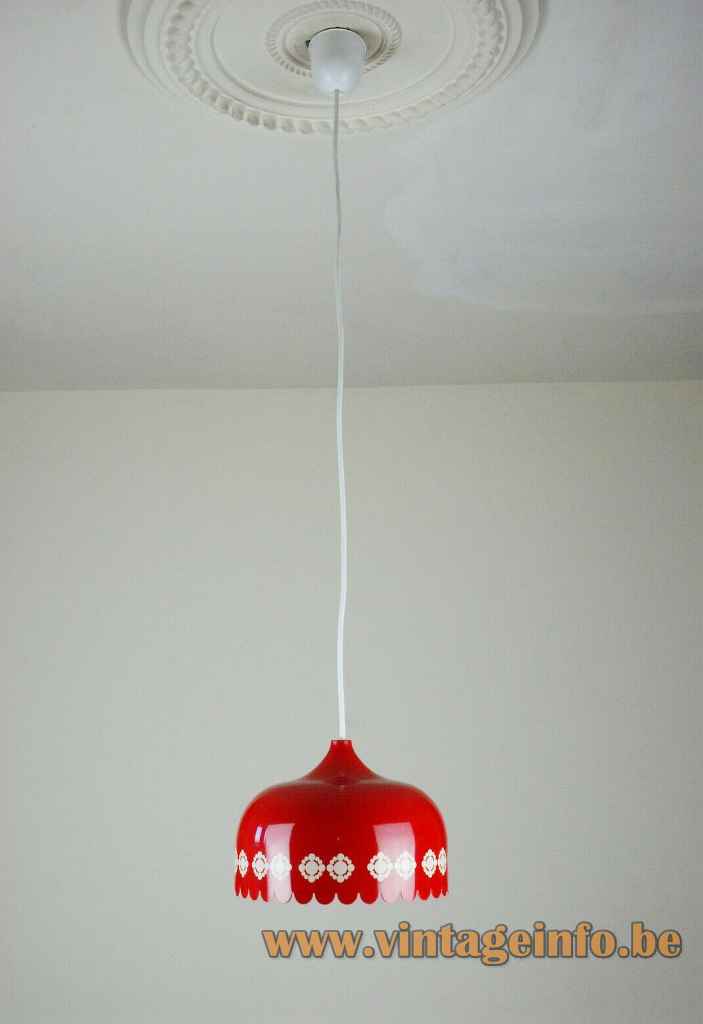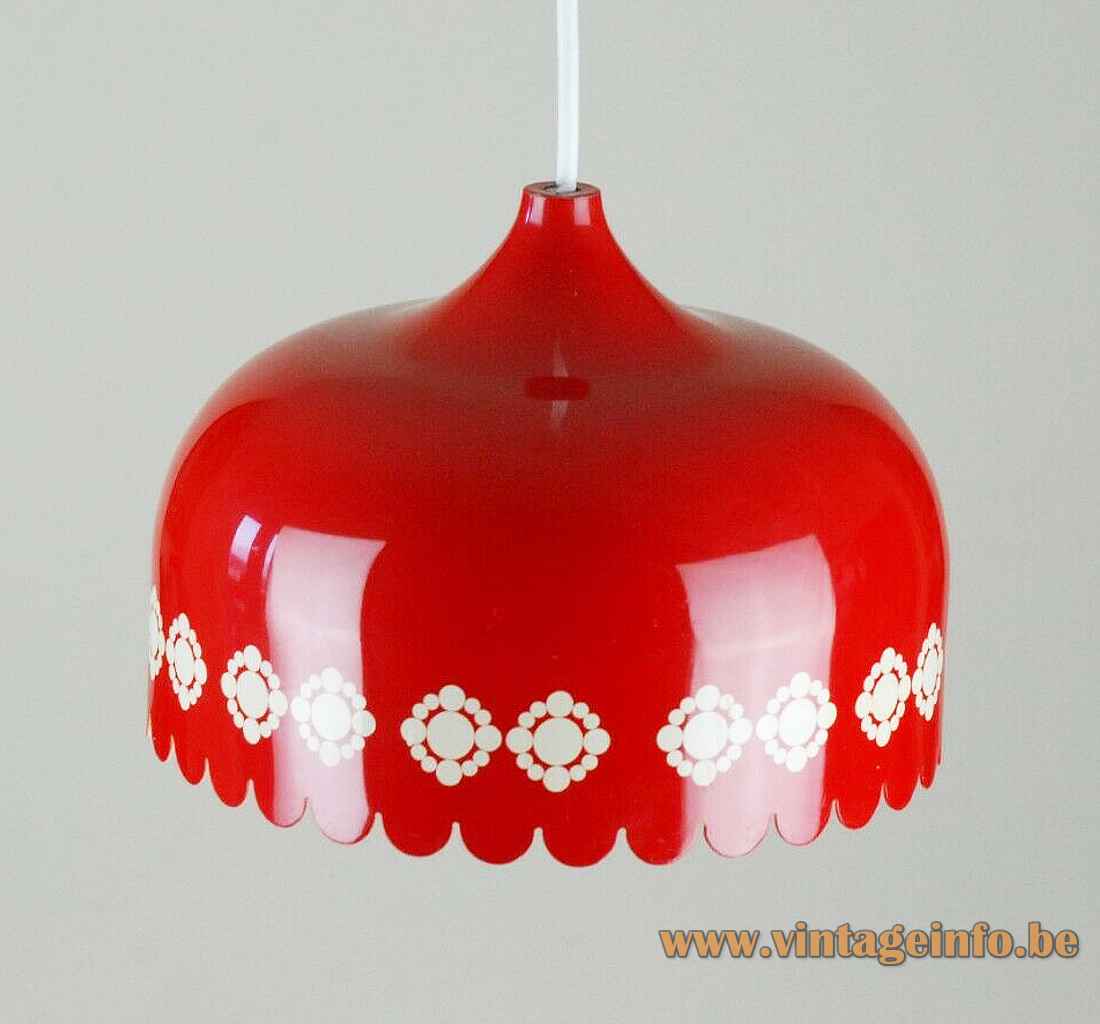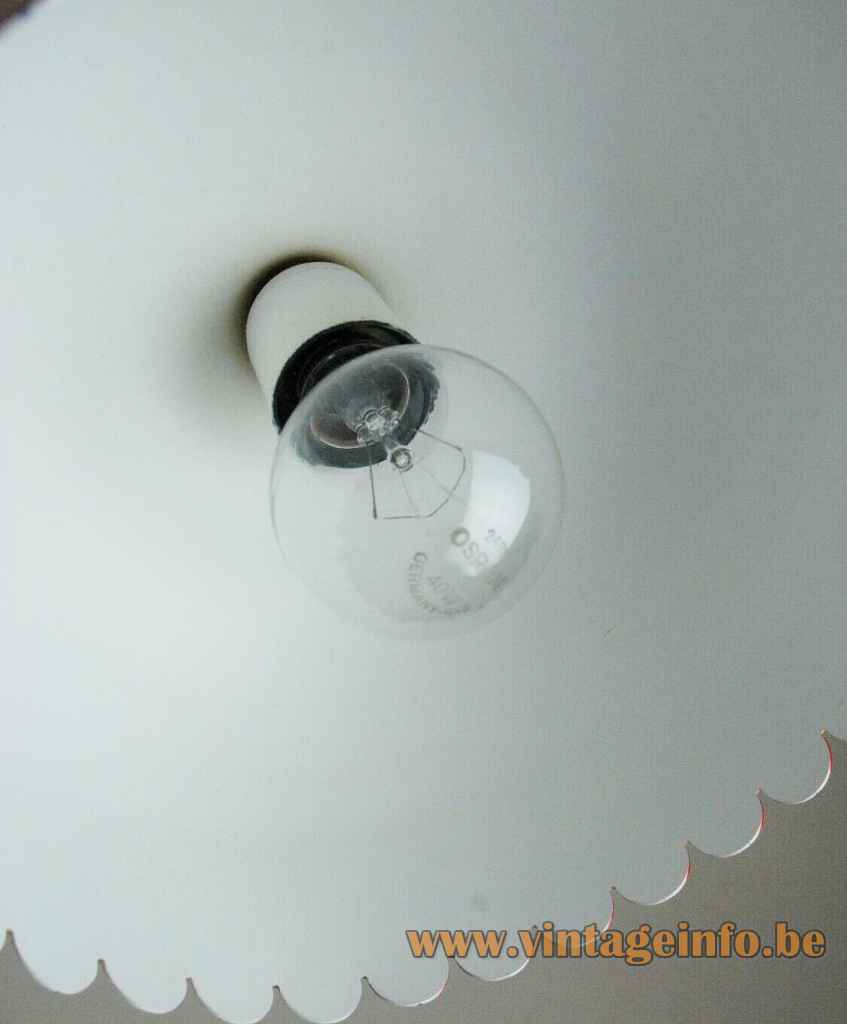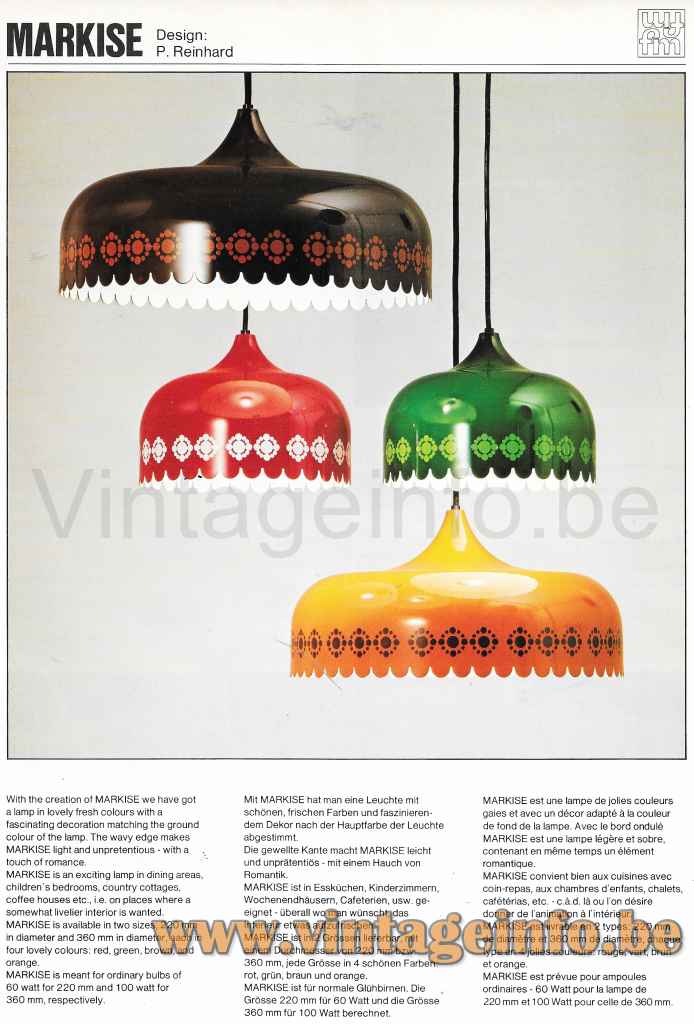Fog & Mørup Markise Pendant Lamp – Catalogue Picture
Links (external links open in a new window)
Lightyears – Republic of Fritz Hansen
Many thanks to Craig from From our house to Bauhaus for the beautiful pictures and enthusiasm. You can find his shop on Ebay over here.
Fog & Mørup Markise Pendant Lamp
Materials: Round red & white enamelled metal parasol style lampshade. White on the inside. White Bakelite E27 socket.
Cord: 90 cm / 35.43”
Height: 23 cm / 9.05”
Width: ∅ 16 cm / 6.29”
Electricity: 1 bulb E27, 1 x 75 watt maximum, 110/220 volt.
Any type of light bulb with an E27 screw base can be used.
Period: 1960s, 1970s – Mid-Century Modern.
Designer: P. Reinhard.
Manufacturer:Fog & Mørup A/S, Denmark.
Other versions: This Fog & Mørup Markise pendant lamp exists in several variations and colours. Reinhard designed several pendant lamps in this style for Fog & Mørup.
Often said it is a design by famous designer Kaj Franck, but that’s not true, of course.
P. Reinhard
No information can be found about the designer. Do you have an idea? Please let us know through the contact form and help improve the websites exactitude.
Fog & Mørup
Ansgar Fog (1880-1930) and Erik Mørup (1879-1972) started their business together in 1904 as a metalwork wholesaler. Two years later they moved to the capital Copenhagen and began to focus on lighting production and over the years taking over several electrical and lighting companies. It was only in the early 1960s that Fog & Mørup really emerged as a key force in lighting design, following the company’s appointment in 1957 of Jo Hammerborg as head of design.
Important designers and architects that worked for the company are: Claus Bonderup, Torsten Thorup, Sidse Werner. Sophus Frandsen, Jørgen Bo, E. Balslev, Peter Avondoglio,. Karen Clemmensen, Ebbe Clemmensen,Hans Due and of course Jo Hammerborg himself.
Lyfa
In the late 1970s Fog & Mørup merged with Lyfa, another leading Danish lighting producer. In 1980 Jo Hammerborg retired. A few years later Lyfa-Fog & Mørup was taken over by Lyskær. The name changed to Lyskaer-Lyfa.
Lyskaer-Lyfa produced lights until 1991, when it was incorporated into Horn Belysning A/S from Aalstrup, also in Denmark, which was itself taken over in 2005 by Nordlux from Ålborg and at a large extent dismantled.
Horn Belysning
The Horn Belysning A/S company was founded in 1952 as a family business and was first named E.S. Horn. In 1963 it changed into Horn Belysning – Horn Lighting.
The company produced lights for IKEA and several other European retail chains. They designed lights but also imported lights from China. In the 1980s Horn was the second biggest light company in Denmark.
In 2005 the name changed into Lightyears, today owned by Republic of Fritz Hansen.
